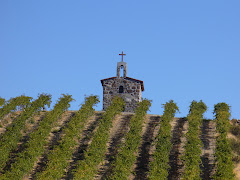 Beaujolais. When you say the word in the context of wine, most people tend to think “Nouveau!” But despite the fact that Beaujolais Nouveau is the world’s most popular French wine, Nouveau is just scratching the surface of this great wine region. We wine geeks often lump Beaujolais in with Burgundy, yet the region was really never part of Burgundy. However, when the northern portion was annexed to the department of the Saône-et-Loire, Beaujolais administratively became part of Burgundy.
Beaujolais. When you say the word in the context of wine, most people tend to think “Nouveau!” But despite the fact that Beaujolais Nouveau is the world’s most popular French wine, Nouveau is just scratching the surface of this great wine region. We wine geeks often lump Beaujolais in with Burgundy, yet the region was really never part of Burgundy. However, when the northern portion was annexed to the department of the Saône-et-Loire, Beaujolais administratively became part of Burgundy.The strata of Beaujolais can be explained thusly:
1. A.O.C. Beaujolais and Beaujolais Supérieur = This is the largest portion of the appellation, and the simple Beaujolais classification constitutes 99+% of the production in this tier. These wines are simple, fresh, with only slight amounts of barrel aging.
2. A.O.C. Beaujolais Villages = This is the most common appellation of Beaujolais, and encompasses the center of the Beaujolais region, which is divided into 38 communes. These communes can legally replace “Villages” on the label with the name of their commune, yet most chose to remain a “Villages.”
3. A.O.C. Cru du Beaujolais = These wines are the best that this region has to offer. There are 10 communes, running along a narrow strip of land between the Mont-Brouilly and the Mâconnais. In order from south to north: Brouilly, Côte de Brouilly, Régnié, Morgon, Chiroubles, Fleurie, Moulin-à-Vent, Chénas, Juliénas and Saint-Amour. These wines see more time in oak, and some have the propensity for longer-lived wines in the cellar.
The primary red grape of this region is the Gamay noir à jus blanc, or the Black Gamay with the white juice. While Pinot Noir is also produced, as are Chardonnay and Aligoté (which are used for Beaujolais Blanc), the wine production is almost entirely made from the Gamay grape. These wines have gone hand-in-hand with the Holiday Season mainly due to the release date of Beaujolais Nouveau, the third Thursday of November, yet the softness of the Gamay grape make it an ideal pairing with the diverse menus that accompany all of the different holidays (Thanksgiving, Christmas, etc.).
The most recognized producers in the Beaujolais are Georges Duboeuf and Louis Jadot, but some other wonderful winemakers such as Chateau Thivin and Michel Chignard produce some exceptional wines as well. Ask your wine store about cru Beaujolais, and see what they have in stock. They are terrific wines, especially for Thanksgiving.











No comments:
Post a Comment